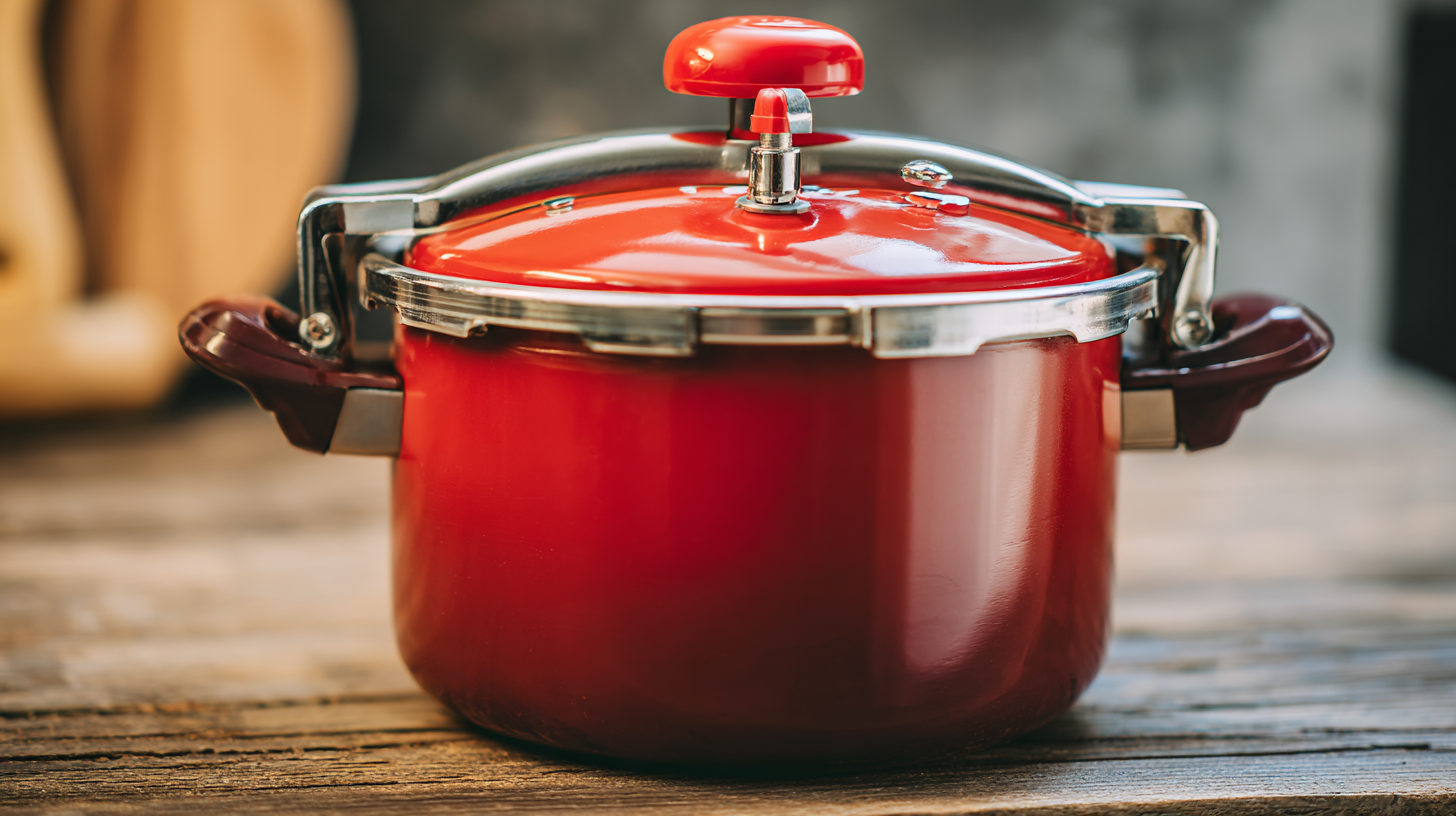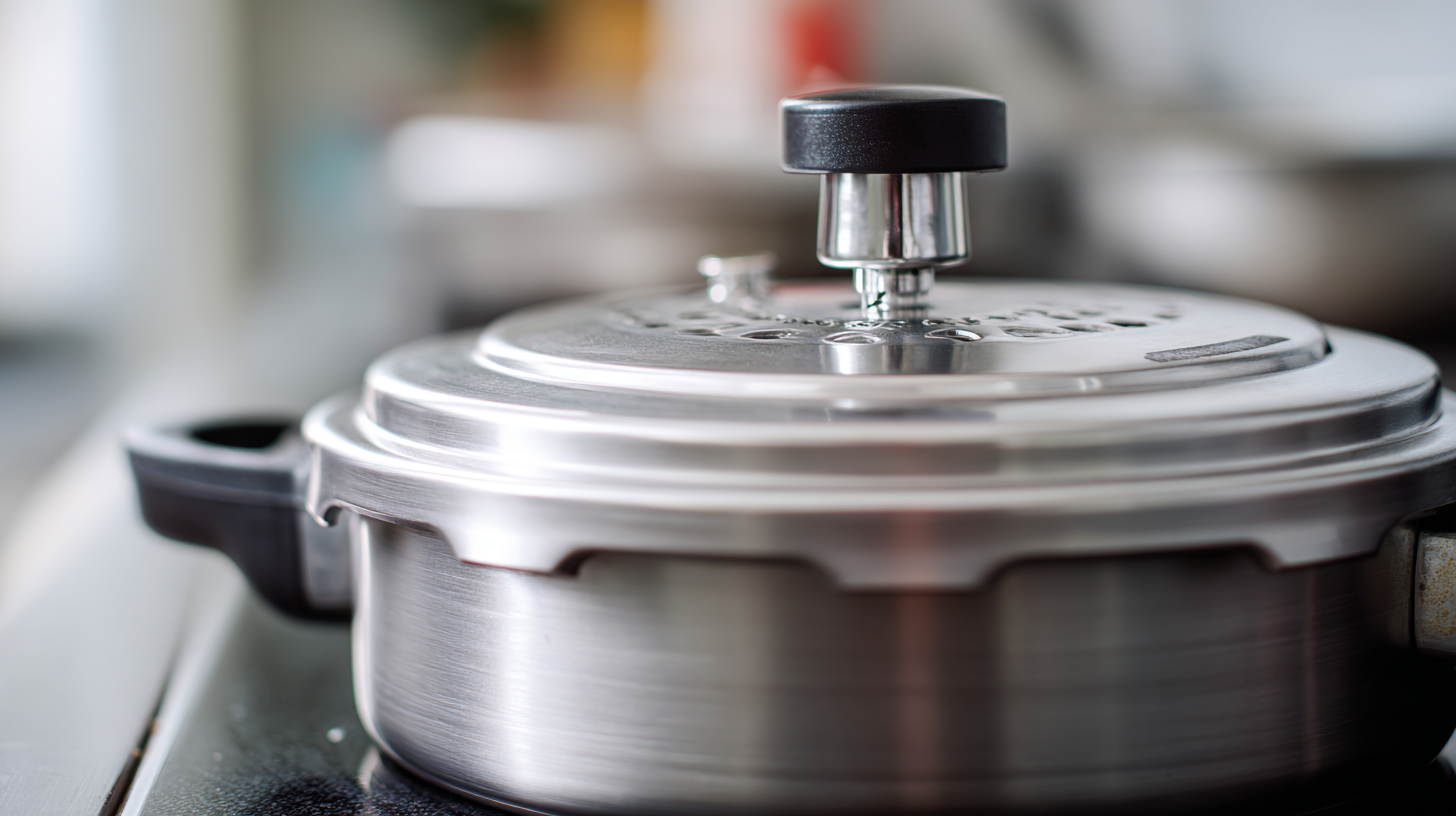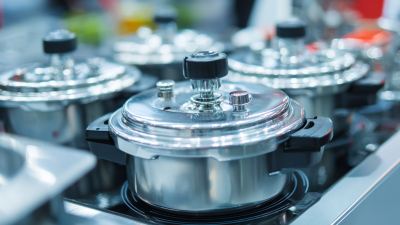Understanding the Importance of Pressure Cooker Cover Parts for Safe and Efficient Cooking
When it comes to pressure cooking, the significance of pressure cooker cover parts cannot be overstated. These components play a crucial role in ensuring that the cooking process is not only efficient but also safe. Understanding the specific functions of each part, from the gasket that creates an airtight seal to the safety valves that regulate pressure, is essential for every home cook. In this article, we will explore why these parts are vital, how they contribute to the overall performance of your pressure cooker, and the potential risks of neglecting their maintenance. By recognizing the importance of pressure cooker cover parts, you can enhance your culinary experience while enjoying the many benefits that pressure cooking has to offer. Whether you are a seasoned chef or a novice cook, this knowledge will empower you to cook with confidence and efficiency.

The Role of Pressure Cooker Covers in Ensuring Safety During Cooking
Pressure cookers have become increasingly popular in modern kitchens, lauded for their ability to prepare meals quickly while preserving nutrients. However, the effectiveness and safety of these appliances largely depend on the quality and integrity of their cover parts. According to a report by the American Institute of Food Safety, improper use or a malfunctioning pressure cooker cover can increase the risk of accidents, such as explosions or food contamination, by up to 70%. This underscores the critical role that covers play in ensuring that steam is effectively sealed within the cooker during high-pressure cooking.

The safety features integrated into pressure cooker covers, such as locking mechanisms and pressure release valves, are essential for safe operation. The National Safety Council highlights that a significant number of kitchen accidents occur due to neglected maintenance or defective parts. Regularly inspecting cover components, such as gaskets and safety locks, can prevent hazardous situations.
Research indicates that maintaining these parts can enhance the cooker’s efficiency by improving heat retention, enabling meals to cook faster and with less energy—an important factor in today's energy-conscious environment. Thus, understanding and maintaining the pressure cooker cover is crucial not only for cooking efficiency but also for the protection of everyone in the kitchen.
Essential Components of a Pressure Cooker Cover for Optimal Performance
The cover of a pressure cooker is not just a simple lid; it is a complex assembly of essential components that work together to ensure safe and efficient cooking. Key parts of a pressure cooker cover include the sealing ring, pressure regulator, and safety valve.

The sealing ring, typically made from silicone or rubber, creates an airtight seal that allows pressure to build up safely inside the pot. A worn or damaged sealing ring can compromise the pressure buildup, leading to inefficient cooking and potential safety hazards.
The pressure regulator is another critical component that maintains the correct pressure level throughout the cooking process. It allows excess steam to escape, preventing the pressure from exceeding safe limits. Additionally, the safety valve serves as a secondary measure to release pressure if the primary regulator fails.
Understanding these components helps users appreciate the engineering behind a pressure cooker and emphasizes the importance of regular maintenance and inspection. Proper care of these parts not only enhances performance but also ensures a safe cooking experience, making it essential for any pressure cooker user to familiarize themselves with these vital cover components.
Common Issues with Pressure Cooker Covers and How to Prevent Them
When using a pressure cooker, the cover is a crucial component that ensures safety and efficiency during cooking. However, several common issues can arise with pressure cooker covers, potentially leading to dangerous situations or ineffective cooking outcomes. One prevalent issue is a damaged sealing ring, which can cause steam to escape and prevent the cooker from reaching the desired pressure. Regularly inspecting the sealing ring for cracks or wear is essential to maintain the integrity of the cooker.
Another common concern is a malfunctioning locking mechanism. If the cover does not lock properly, there is a risk of accidental opening under pressure, which can be hazardous. To prevent this, it’s important to ensure that both the lock and the hinges are clean and free of debris. If you notice any stiffness or difficulty in locking the cover, address it immediately by troubleshooting or seeking replacement parts.
**Tips:** Always clean your pressure cooker’s cover and components thoroughly after each use. Avoid using abrasive cleaners that could damage the parts. Additionally, familiarize yourself with your cooker’s manual to understand the specific care instructions for your model. Taking these proactive steps can help you enjoy safe and efficient pressure cooking.
Common Issues with Pressure Cooker Covers and Their Frequency
Maintaining Your Pressure Cooker Cover for Long-Lasting Use
Maintaining your pressure cooker cover is essential for ensuring both safety and efficiency while cooking. Regular inspection of the cover is crucial to identify any wear and tear. Look for cracks or damage in the material that may compromise its ability to seal properly. A damaged cover can lead to steam leaks, resulting in uneven cooking and potentially dangerous situations. It's advisable to replace any worn parts, such as the silicone gasket or safety valves, as these components are critical for maintaining the pressure during cooking.

Proper cleaning techniques also contribute to the longevity of your pressure cooker cover. After each use, allow the cover to cool down before washing it with warm, soapy water. Avoid using abrasive sponges that could scratch the surface. Pay special attention to the sealing ring area and ensure it's free from food particles and residue. By incorporating these maintenance practices, you can prolong the life of your pressure cooker cover and enhance your cooking experience, making it both safe and efficient.
Understanding Pressure Cooker Cover Parts: A Guide for Home Chefs
When it comes to pressure cooking, the cover parts of the cooker play an essential role in ensuring both safety and efficiency in the kitchen. Understanding these components is crucial for home chefs who aim to optimize their cooking experience. The pressure cooker lid, made from durable materials, serves as the primary barrier that maintains the pressure inside the pot. It's vital for the lid to seal properly, as a loose or damaged lid can result in steam escaping, leading to uneven cooking and potential safety hazards.
Moreover, the locking mechanism and safety valves found within the cover are designed to prevent accidents. A functional locking system secures the lid in place during cooking, while safety valves regulate the internal pressure and release steam when necessary. Home chefs should regularly inspect these parts for wear and tear to ensure they are operating correctly. By understanding and maintaining these key elements, cooks can enhance their culinary skills while enjoying the benefits of pressure cooking, including faster meal preparation and the preservation of nutrients in food.
Understanding the Importance of Pressure Cooker Cover Parts for Safe and Efficient Cooking
| Part | Function | Material | Maintenance Tips |
|---|---|---|---|
| Cover Lock | Ensures the cover is securely locked during cooking | Stainless Steel | Regularly check for wear and replace if necessary |
| Gasket | Creates a tight seal to maintain pressure | Silicone or Rubber | Clean regularly and replace every 1-2 years |
| Vent Pipe | Allows steam to escape to avoid overpressure | Aluminum | Keep clear of any obstructions |
| Pressure Indicator | Shows whether the cooker is under pressure | Plastic/Metal | Check for functionality before use |
| Handle | Provides a safe grip to lift and open the cooker | Bakelite or Plastic | Ensure tight attachment to the lid |
Related Posts
-

Advantages of Using Quality Pressure Cooker Cover Parts for Enhanced Cooking Safety
-

Exploring Trends in Pressure Cooker Cover Parts at the 2025 China Import and Export Fair
-

7 Best Multi Cookers Without Pressure: Elevate Your Cooking Game Today!
-

How to Create the Perfect Rice Pudding Using an Instant Pot
-

Elevate Your Desserts with the Incredible Benefits of Instant Pot Rice Pudding Recipes
-

7 Best Pulled Pork Multicooker Recipes for Ultimate Flavor and Convenience
